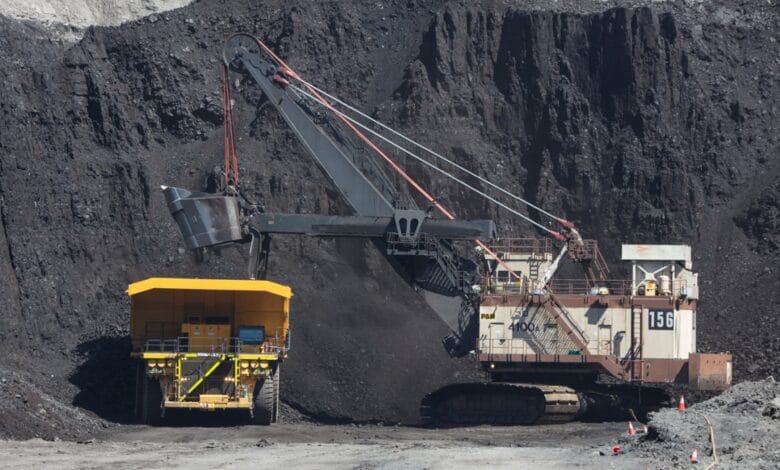Peabody Energy Stock: Is Now the Time to Buy? Expert Insights and Market Trends

As energy markets continue to evolve, investors are left grappling with a pivotal question: Is now the time to buy Peabody Energy stock? With fluctuating coal prices, shifts in renewable energy adoption, and broader economic factors at play, understanding the current landscape is essential for making informed investment decisions. Peabody Energy, one of the largest coal producers in the U.S., stands at a crossroads, balancing traditional energy demands with increasing pressure to adapt to sustainable alternatives.
In this article, we delve into expert insights and the latest market trends to determine whether Peabody Energy stock is a worthwhile addition to your portfolio. Join us as we explore the potential benefits and risks associated with this pivotal investment opportunity, guiding you through the complexities of today’s energy sector. Whether you are a seasoned investor or a newcomer, this analysis will equip you with the information needed to navigate the changing tides of the energy market.
Overview of Peabody Energy Corporation (BTU)
Peabody Energy Corporation (NYSE: BTU) is the largest private-sector coal company globally, with mining operations concentrated in the U.S. and Australia. Founded in 1883, the company has navigated over a century of industry shifts, including a 2016 Chapter 11 bankruptcy due to debt burdens and coal price declines. Emerging from restructuring in 2017, Peabody refocused on thermal and metallurgical coal production, serving power generation and steel industries. As of 2025, its operations span segments like Seaborne Thermal (28.7% of revenue), Powder River Basin (25.9%), and Seaborne Metallurgical (24.9%).
Current Market Trends in the Energy Sector
The global energy sector is undergoing a dual transition: rising renewable adoption and persistent demand for traditional fuels. While renewables dominate new electricity capacity, coal remains critical in emerging markets and for grid stability. In 2024, coal demand grew 1%, driven by Asia-Pacific industrial activity and U.S. power needs amid natural gas volatility. However, stricter emissions policies and ESG investing pressures challenge coal-heavy firms like Peabody. Meanwhile, AI-driven data centers and extreme weather events have boosted electricity demand, indirectly supporting coal consumption in the short term.
Expert Insights on Peabody Energy Stock
Analysts remain divided on BTU. Bulls highlight its cost leadership, high-margin Australian operations, and long-term contracts with U.S. utilities, such as a 7–8 million-ton annual supply deal with Associated Electric Cooperative[citation:3]. Bears emphasize structural decline risks, noting Peabody’s 37.8% YTD stock drop (as of June 2025) and reliance on volatile coal prices. Institutional investors like Elliott Management and Vanguard have adjusted holdings, reflecting cautious optimism about debt reduction efforts and dividend potential (current yield: 2.33%).
Factors Influencing Peabody Energy’s Stock Price
Coal Prices: Global thermal coal prices rebounded in 2021–2022 but remain below pre-2011 peaks. BTU’s profitability is tightly linked to Newcastle and Powder River Basin pricing.
Debt Management: Peabody reduced debt from 63B in 2015 to 1.26B in 2021, but recent bond-equity swaps signal ongoing balance sheet stress.
Policy Shifts: U.S. tariffs on Chinese imports and federal leasing incentives under pro-coal administrations could boost domestic demand. Conversely, carbon taxes and renewable subsidies pose long-term threats.
Global Demand: Asian steel production and European energy diversification post-Russia sanctions create export opportunities.
Risks and Opportunities for Investors
Risks:
Energy Transition: Coal’s shrinking role in power grids (down to 23% of U.S. electricity in 2021) threatens long-term demand.
Regulatory Pressures: Stricter emissions standards and mine safety regulations could raise operational costs.
Volatility: BTU’s high beta (3.8) reflects sensitivity to commodity cycles and geopolitical shocks.
Opportunities:
Short-Term Supply Crunches: Post-pandemic industrial recovery and LNG competition have revived coal’s pricing power.
Metallurgical Coal Demand: Steel production in India and Southeast Asia supports Peabody’s high-grade Australian mines.
Shareholder Returns: With a P/B ratio of 0.43, BTU appeals to value investors betting on coal’s “last stand”.
Historical Performance Analysis of Peabody Energy Stock
BTU’s stock has been a rollercoaster. From a 2008 peak of 1,234, it crashed to 2.54 in 2016 amid bankruptcy[citation:5]. Post-restructuring, shares rebounded to 39.69 in 2018 before sliding again during the 2020 energy crisis. The 2021–2022 rally (peaking at 23) mirrored coal’s temporary revival, but 2025’s $12.89 price reflects renewed skepticism.
Comparing Peabody Energy with Competitors
Peabody competes with U.S. rivals like Arch Resources (ARCH) and global giants like China Shenhua. While ARCH focuses on metallurgical coal, Peabody’s diversified thermal-metallurgical mix provides stability. However, Shenhua’s vertical integration (coal-to-power) and state backing give it a resilience edge in volatile markets. Peabody’s Australian assets offer higher margins but face carbon tax risks compared to U.S.-centric peers.
Analyst Recommendations and Price Targets
Analyst sentiment is mixed. B. Riley raised its target from 7 to 11 in 2021, citing improved EBITDA margins. However, 2025’s average target is 15–18, balancing coal’s near-term tailwinds and long-term uncertainties. Goldman Sachs warns of “stranded asset” risks, while Morgan Stanley sees upside if coal prices exceed 120/ton.
Conclusion: Should You Invest in Peabody Energy Now?
Peabody Energy suits contrarian investors comfortable with high risk-reward dynamics. Its cheap valuation, dividend yield, and coal’s lingering relevance in power grids offer short-term upside. However, the global shift to renewables, debt overhang, and regulatory headwinds make it a speculative play. Diversified energy portfolios might allocate 3–5% to BTU as a hedge against energy volatility, but long-term holders should brace for sectoral decline.